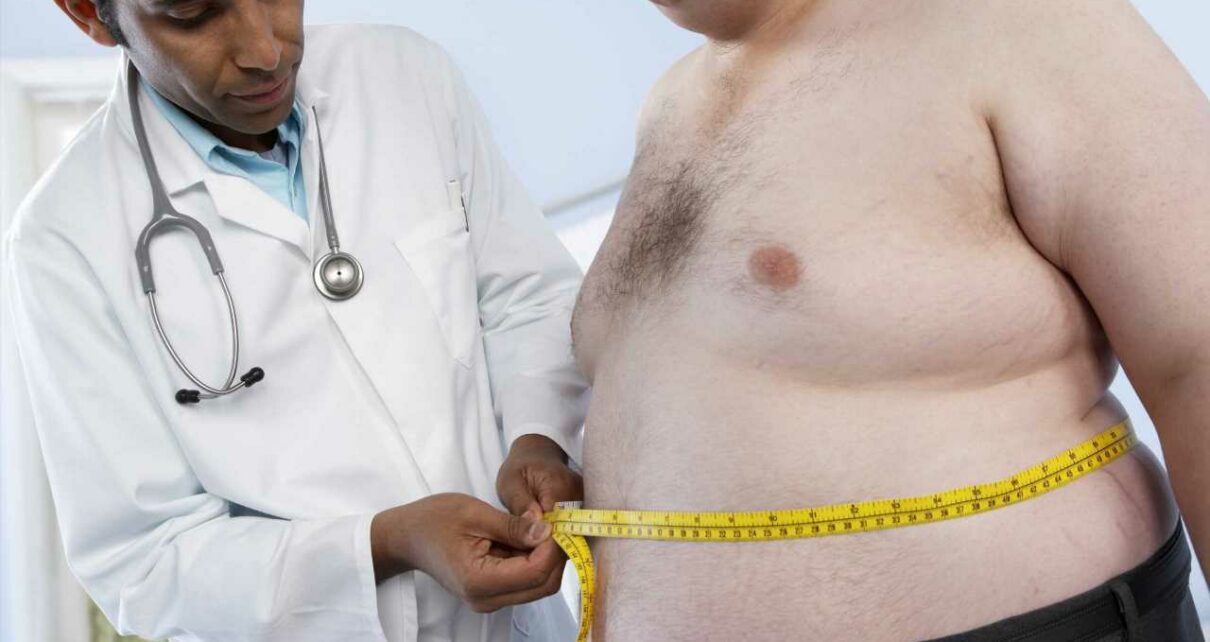TWO thirds of UK adults are overweight or obese, the latest statistics show.
But some areas are significantly fatter than others.
Research by NHS prescription service Now Patient revealed the number one hotspot for tubby Brits is Blaenau Gwent.
Four out of five people in the south-eastern Welsh county borough are classified as overweight or obese – meaning their body mass index (BMI) is 25 or above.
In second place is nearby Merthyr Tydfil, where 77 per cent of residents fall under the same category.
And the bronze medal goes to Thurrock in Essex, with 76.3 per cent.
READ MORE ON OBESITY
Thousands more Brits to get Wegovy weight-loss jabs on NHS – are you eligible?
I lost 17st & ruined my sex life – my excess skin is so loud as it flaps about
This was closely followed by Stockton-on-Tees in County Durham, where 76.8 per cent of people are overweight or obese, and East Ayrshire and the Orkney Islands in joint fifth place with 75 per cent.
Making up the rest of the top 10 is Tamworth in Staffordshire (74.9 per cent), Hartlepool in County Durham (74.6 per cent), Knowsley in Merseyside (74 per cent), Torfaen in South East Wales (73.9 per cent), and North East Derbyshire (73.8 per cent).
The neighbourhood with the lowest proportion of chubby locals is Islington in North London.
Only 44 per cent of those living there are classified as overweight or obese.
Most read in Health
The vegetable juice that can help reduce the risk of a heart attack
Urgent health warning over deadly disease that can spread in hot tubs and showers
I lost 17st & ruined my sex life – my excess skin is so loud as it flaps about
The 'silent' symptom of killer cancer obvious when you TALK – 6 other signs
Other London boroughs, including Westminster (45.3 per cent), Richmond upon Thames (45.5 per cent), and Kensington and Chelsea (46.4 per cent), also make up the "thin" list.
Now Patient, which analysed government data from England, Scotland and Wales, also discovered which areas were trying the hardest to shed some pounds.
Results showed Caerphilly residents search for weight loss solutions more than any other area in the UK, with 3,410 made every year.
Other diet-conscious regions included Bridgend in Wales, Kingston upon Hull in East Yorkshire, and Middlesbrough in North Yorkshire.
The UK obesity hotspots
ENGLAND
- Thurrock, Essex – 76.3 per cent
- Stockton-on-Tees, County Durham – 75.8 per cent
- Tamworth, Staffordshire – 74.9 per cent
- Hartlepool, County Durham – 74.9 per cent
- Knowsley, Merseyside – 74 per cent
- North East Derbyshire – 73.8 per cent
- Cannock Chase, Staffordshire – 73.7 per cent
- Wigan, Greater Manchester – 73.7 per cent
- Harlow, Essex – 73.5 per cent
- Boston, Lincolnshire – 73.4 per cent
- Burnley,Lancashire – 73.4 per cent
WALES
- Blaenau Gwent – 79.9 per cent
- Merthyr Tydfil – 77 per cent
- Torfaen – 73.9 per cent
- Bridgend – 71.2 per cent
- Carmarthenshire – 68.2 per cent
- Caerphilly – 67.7 per cent
- Neath Port Talbot – 63.4 per cent
- Denbighshire – 63.4 per cent
- Ceredigion – 63.2 per cent
- Rhondda Cynon Taf – 62 per cent
SCOTLAND
- East Ayrshire – 75 per cent
- Orkney Islands – 75 per cent
- Dumfries and Galloway – 72 per cent
- Highland – 71 per cent
- Moray – 71 per cent
- Na h-Eileanan Siar – 71 per cent
- West Dunbartonshire – 71 per cent
- Aberdeenshire – 71 per cent
- North Ayrshire – 70 per cent
- North Lanarkshire – 70 per cent
To help people slim down healthily, experts put together a list of their top tips.
A spokesperson for Now Patient said: "Losing weight is a difficult process.
"It takes some lifestyle changes which require a lot of discipline.
"However, it can massively improve your physical and mental health.
"Here are some tips to help you lose weight healthily."
1. Daily walks
You might think that losing weight requires hours and hours of exercise, but that's not necessarily true.
While sports like running and cycling will help you burn calories, increasing your activity levels can be as simple as going on a walk.
Anything between 8,000 and 12,000 steps a day can improve your health, and the number on the scales.
2. Calorie deficit
"Burning more calories than you consume is the only way you can lose weight," Now Patient said.
"Although it sounds simple, resisting those cravings requires a lot of discipline."
On average, men need around 2,500 calories a day, and women need around 2,000.
However, this total varies depending on your age, height, weight, and activity levels.
You can find maintenance calculators online to find out how many calories you need a day.
Aiming for underneath this figure can help you determine how many calories you can eat in a day to lose weight.
3. Protein
Implementing more protein into your diet is a great way of helping you lose weight, experts say.
It helps you feel fuller for longer, therefore reduces your chances of snacking.
Protein reduces ghrelin, which is the hunger hormone, and boosts peptide YY, which is the hormone that makes you feel satiated, Now Patient said.
Protein can be found in meat, yoghurts, soy and peas.
4. Vegetables
Eating more vegetables is another way of helping you lose weight.
Most vegetables are low in calories, meaning you can eat more of them and feel fuller, and they will improve your overall health too.
5. It’s a marathon, not a sprint!
"Losing weight takes time – it’s not something that can happen overnight," Now Patient said.
While severely reducing your calories at the beginning makes the scales look better, it will be harder to keep up in the long run.
Minimally reducing your calories to start with and gradually increasing the deficit each week will be much easier to keep up in the long run, the service added.
What is a healthy BMI?
THE term obese describes someone who has excess body fat.
The most widely used method to check if you're a healthy weight is body mass index (BMI).
For most adults, if your BMI is:
- Below 18.5 – you're in the underweight range
- 18.5 to 24.9 – you're in the healthy weight range
- 25 to 29.9 – you're in the overweight range
- 30 to 39.9 – you're in the obese range
- 40 or above – you're in the severely obese range
The NHS uses a slightly different score for people with a South Asian, Chinese, other Asian, Middle Eastern, Black African or African-Caribbean family background:
- 23 to 27.4 – you're in the overweight range
- 27.5 or above – you're in the obese range
There are, however, limitations to the metric because it measures whether a person is carrying too much weight, not too much fat.
For example, people who are very muscular can have a high BMI without too much fat.
You can use the NHS BMI healthy weight calculator.
Source: Read Full Article








